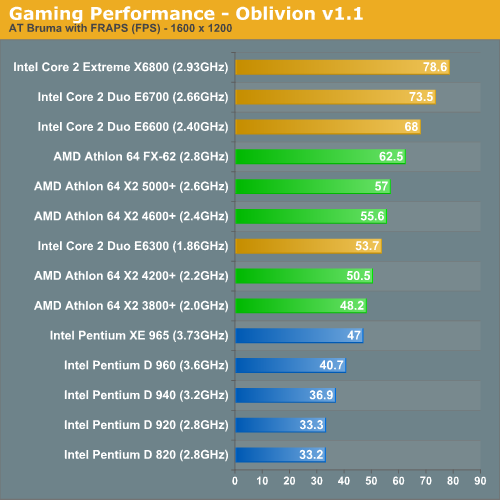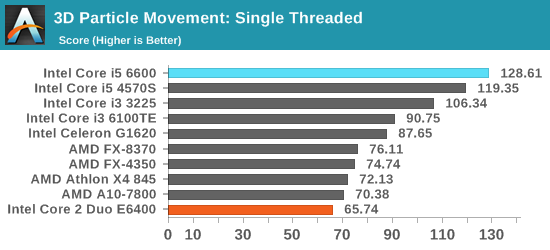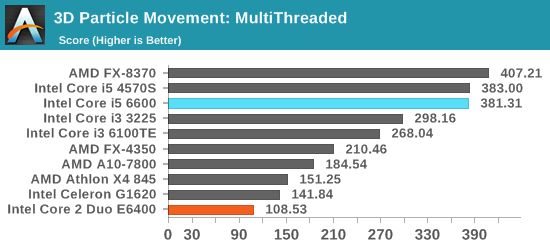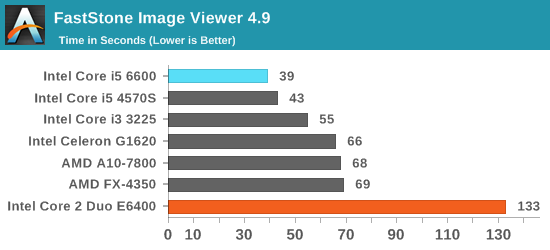Ten Year Anniversary of Core 2 Duo and Conroe: Moore’s Law is Dead, Long Live Moore’s Law
by Ian Cutress on July 27, 2016 10:30 AM EST- Posted in
- CPUs
- Intel
- Core 2 Duo
- Conroe
- ITRS
- Nostalgia
- Time To Upgrade
Core: Performance vs. Today
Looking back at Anand’s original review, and at a time where CPU performance made a lot of difference for gaming frame rates at 1600x1200, the conclusion was quite startling.
Intel's Core 2 Extreme X6800 didn't lose a single benchmark in our comparison; not a single one. In many cases, the $183 Core 2 Duo E6300 actually outperformed Intel's previous champ: the Pentium Extreme Edition 965. In one day, Intel has made its entire Pentium D lineup of processors obsolete.

Imagine something like that happening today. (Actually, if you believe what we’ve been told, AMD’s upcoming AM4 platform with Zen and Bristol Ridge might make its current desktop platform obsolete, but that’s a slightly different discussion because of how integrated graphics has adjusted the landscape for CPU focused silicon somewhat.)
That’s Intel vs. Intel though, against AMD it was just as damning.
Compared to AMD's Athlon 64 X2 the situation gets a lot more competitive, but AMD still doesn't stand a chance. The Core 2 Extreme X6800, Core 2 Duo E6700 and E6600 were pretty consistently in the top 3 or 4 spots in each benchmark, with the E6600 offering better performance than AMD's FX-62 flagship in the vast majority of benchmarks.
However, Core 2 Duo has now been out for 10 years. I’ve pulled up some benchmark data from our database to see if we have any matches to compare against processors that cost $214 today. The Core i5-6600 fits our bill perfectly, and there are two benchmarks which match up. I’ve also dotted the graphs with a range of more recent AMD and Intel processors for progression.



Our 3D Particle Movement is more for idealized synthetic workloads, however FastStone is all about image conversion and favors high frequency, high single threaded performance.
Naturally, modern processors nearing 4.00 GHz have a large advantage over the 2.13 GHz version of Core 2 Duo, as well as multiple generations of improved microarchitecture designs and smaller lithography nodes for power efficiency. However, has any processor family had as much nostalgic longevity as the consumer launch of Core? One could argue that while Core put Intel on top of the heap again, Sandy Bridge was a more important shift in design and as a result, many users went from Conroe to Sandy Bridge and have stayed there.










158 Comments
View All Comments
Nameofuser44 - Wednesday, August 3, 2016 - link
Here I thought I was the only slow poke to not give up my C2D (4300) & ATI 5770 / 2GB ram /as a daily driver. Well here's to ten wonderful years!rarson - Thursday, August 4, 2016 - link
I'm still using a Core 2 Duo E8600 in my desktop. In an Abit P-35 Pro motherboard. The damn thing just works too well to get rid of, and I love the Abit board.rarson - Thursday, August 4, 2016 - link
Durr, it's the IP35 pro, P35 chipset.skidaddy - Friday, August 5, 2016 - link
My 10 year old E6600 with EVGA board & EVGA/NVIDIA 295 video card is also a great space heater. CUDA on card extended utility of set up. Only limitation is no CPU video decoding limits streaming to 1440. Waiting for the Intel Kaby Lake or better on die Intel GPU to be able to handle 4K @ 60fps over HDMI not USB3(+).BoberFett - Friday, August 5, 2016 - link
I'm still rocking my C2D E6500. It does the job.johnpombrio - Friday, August 5, 2016 - link
The Core 2 architecture was developed in Israel by a Intel team working on mobile processors. Intel suddenly realized that they had a terrific chip on their hands and ran with it. The rest is history.http://www.seattletimes.com/business/how-israel-sa...
FourEyedGeek - Monday, August 8, 2016 - link
How do you think one of those first Core processors would fare if fabricated at Intels 10nm process?Could they lower voltage or increase performance significantly?
Visual - Monday, August 8, 2016 - link
So a 10 year old chip is about half the performance of today's price equivalent. I'd have hoped today's tech to be more like 10 times better instead of just 2.